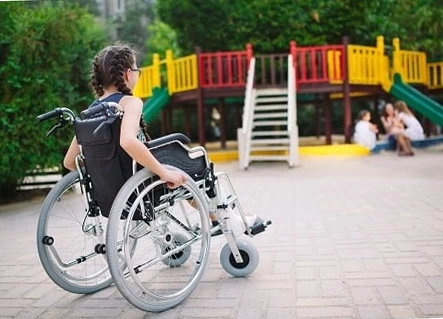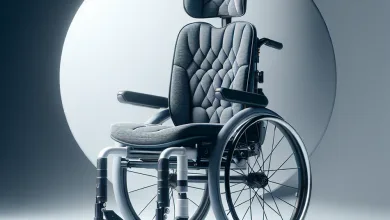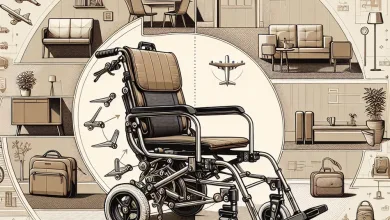7 Must-Know Considerations for Buying a Children’s Wheelchair

Table of Contents
7 Must-Know Considerations for Buying a Children Wheelchair
Unlocking Independence: Choosing the Right Wheelchair for Your Child
Imagine your child’s face lighting up excitedly as they explore the park in their new wheelchair. A wheelchair can be more than just a mobility aid; it can be a tool for independence, opening doors to new experiences and adventures. However, with so many options available, choosing the suitable wheelchair for your special needs child can feel overwhelming. This guide will help you confidently navigate the buying process, ensuring you find the perfect fit for your child’s unique needs.
1. Understanding Your Child’s Needs and Abilities
Every child is unique, and their wheelchair needs will be too. Here are some key factors to consider:
- Age and Size: Children grow quickly! Opt for a wheelchair with adjustable features to accommodate growth spurts. Consider the standard child wheelchair size available and how it will fit your child now and in the future.
- Physical Needs: Think about your child’s physical limitations and strengths. Do they need a wheelchair for full-time use or occasional support? Will they be able to propel themselves manually, or is a power wheelchair a better option?
- Activity Level: Is your child a little adventurer who loves exploring the outdoors? Or do they primarily need a wheelchair for indoor use? Consider your child’s lifestyle to choose a wheelchair that can keep up with their activities.
2. Manual vs. Power Wheelchairs: Weighing Your Options
There are two main types of wheelchairs to consider:
- Manual Wheelchairs: These wheelchairs are propelled by the user, requiring upper body strength and coordination. They are typically lighter and more manoeuvrable than power wheelchairs.
- Power Wheelchairs: These wheelchairs are battery-operated and controlled by a joystick. They are a good option for children with limited upper body strength or who tire easily.
Pros and Cons Chart: Manual vs. Power Wheelchairs
| Feature | Manual Wheelchair | Power Wheelchair |
| Effort Required | Requires upper body strength | Less effort needed |
| Maneuverability | Generally more maneuverable | Less maneuverable in tight spaces |
| Cost | Typically less expensive | More expensive |
| Independence | Promotes independence and exercise | May require assistance in some situations |
The best choice for your child will depend on their needs and abilities. Always best to talk to a healthcare professional or occupational therapist to get a personalized recommendation.
3. Achieving the Perfect Fit: Comfort is Key!
A comfortable wheelchair is essential for your child’s well-being. Here’s what to consider:
- Proper Measurement: Just like shoes, a wheelchair needs to fit correctly! A healthcare professional can measure your child to ensure the right seat depth, backrest height, and footrest placement.
- Pressure Relief: Children who use wheelchairs for extended periods are at risk for pressure sores. Look for a wheelchair with pressure-relieving cushions and seat backs.
- Support and Adjustability: Choose a wheelchair with features like adjustable armrests and headrests to provide optimal support and comfort for your child.
4. Maneuverability Matters: Making Every Turn Easy
Your child’s wheelchair should be accessible to manoeuvre, both for them and for you (if you’ll be pushing it). Here are some factors to consider:
- Weight of the Wheelchair: A lighter-weight wheelchair will be more accessible to push and manoeuvre.
- Turning Radius: The turning radius refers to the minimum space the wheelchair needs to make a complete turn. A smaller turning radius is ideal for navigating tight spaces.
- Wheel Size and Type: Larger wheels are better for outdoor use, while smaller wheels may be easier to manoeuvre indoors.
5. Built to Last: Durability and Growth Potential
Children are tough on their belongings, and their wheelchairs are no exception. Choose a wheelchair built to last, with a sturdy frame and high-quality materials.
Here are some additional tips for durability:
5. Built to Last: Durability and Growth Potential
- Look for a wheelchair with a weight capacity to accommodate your child’s growth.
- Consider a wheelchair with a modular design, allowing you to swap out components like seats and cushions as needed.
6. Safety First: Ensuring a Secure Ride
A wheelchair should be a safe haven for your child. Here are some safety features to consider:
- Lap Belt and Anti-Tip Bars: These features help keep your child secure and prevent them from tipping over.
- Brakes: Choose a wheelchair with easy-to-use brakes that are appropriate for different terrains.
- Reflective Materials and Flags: Enhance visibility, especially during low-light conditions.
7. Portability and Transportation: Taking Your Adventures on the Road
Will you be travelling with your child’s wheelchair? Consider these factors:
- Folding Mechanism: A wheelchair that folds easily is ideal for transportation and storage.
- Vehicle Compatibility: Make sure the folded wheelchair will fit comfortably in your car or other designated vehicle.
How Much Does a Child’s Wheelchair Cost?
The cost of a child’s wheelchair can vary depending on several factors, including the type of wheelchair, features, materials, and brand. Standard child wheelchair sizes tend to be less expensive than custom-made wheelchairs.
Here’s a general range to consider:
- Manual wheelchairs: $500 – $3,000+
- Power wheelchairs: $2,000 – $10,000+
Child Wheelchair Buying Guide: Additional Tips
- Insurance Coverage: Check with your insurance provider to see if they cover the cost of a wheelchair.
- Grants and Assistance Programs: Several organizations offer financial assistance for wheelchairs.
- Trial Periods: Some wheelchair providers offer trial periods to ensure a good fit before purchase.
FAQs
What questions should I ask when buying a wheelchair for my child?
Here are some key questions to ask:
* What type of wheelchair is best for my child’s needs?
* How will the wheelchair fit my child?
* What features are essential for my child’s comfort and safety?
* Is this wheelchair covered by my insurance?
* Does the provider offer trial periods or financing options?
How often should I replace my child’s wheelchair?
A child’s wheelchair should be replaced when it no longer fits properly, becomes worn out, or no longer meets your child’s needs.
Where can I find a good selection of children’s wheelchairs?
Children’s wheelchairs are available at medical supply stores, rehabilitation centres, and some online retailers. However, it’s important to consult with a healthcare professional for a proper evaluation before purchasing a wheelchair.
Conclusion
Finding the suitable wheelchair for your child is an important decision. Considering the factors outlined in this guide, you can feel confident choosing a wheelchair that promotes comfort, independence, and a sense of adventure for your special needs child. Remember, a wheelchair is not just a medical device; it’s a tool that can open doors to a world of possibilities.
We hope this guide has empowered you to feel more confident about choosing a suitable wheelchair for your child! Every child’s journey is unique, so if you have any questions, tips, or experiences to share, we’d love to hear from you in the comments section below. Let’s create a supportive community for parents and caregivers of children who use wheelchairs!



